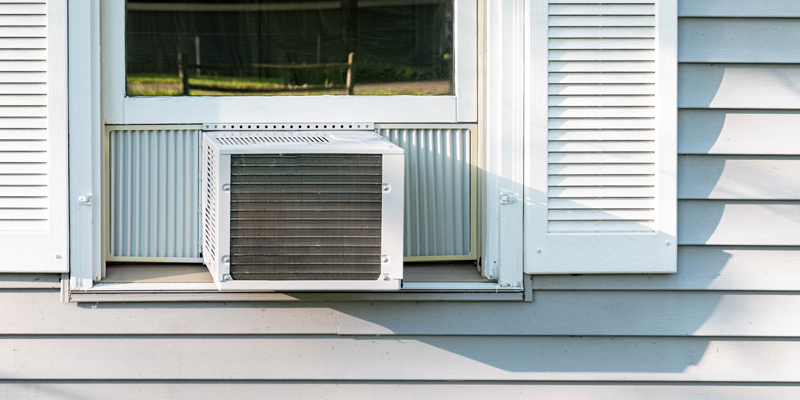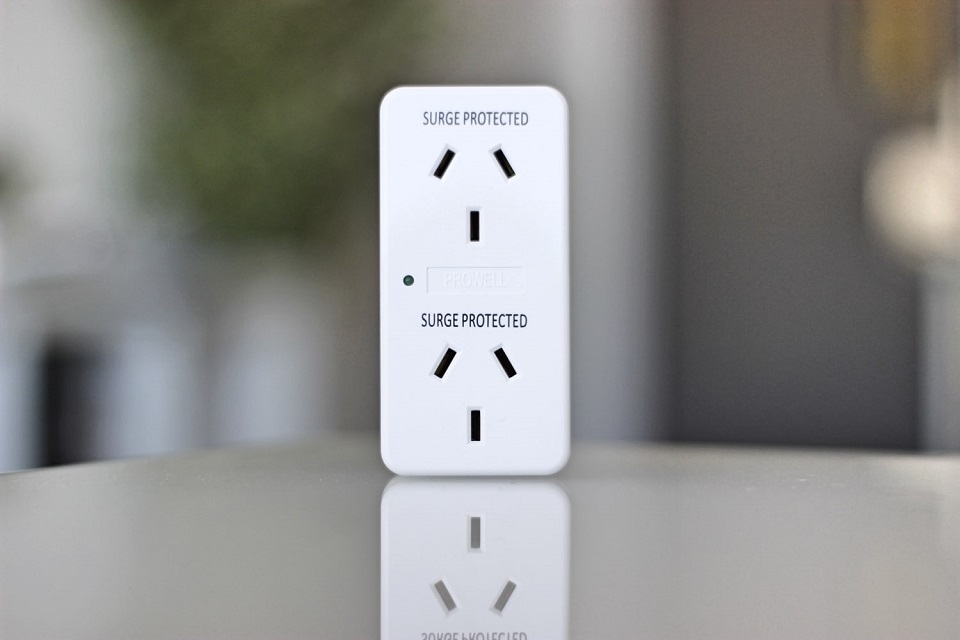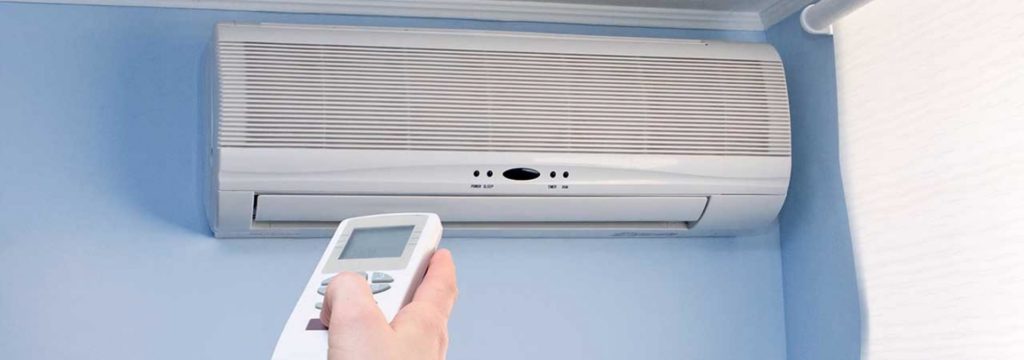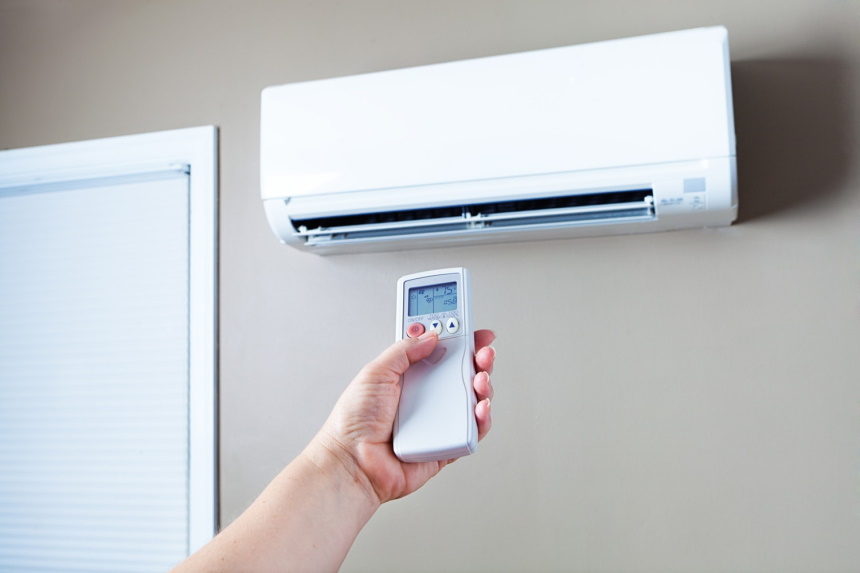

When the weather starts to warm up, a portable air conditioner can save the day. These useful units help to cool down rooms and living spaces in a matter of minutes, providing much more satisfying environments for you and your family to enjoy. Plus, since they’re totally portable, you can move them around and enjoy their cooling powers anywhere you want.
We’ve reviewed more than 40 of the best portable air conditioner units available to buy today, and we found that the Black + Decker BPACT10WT is the very best one. With its cooling and heating modes, plus the option to seamlessly integrate with Alexa for voice commands and easy operation, this portable air conditioner is a big winner. We also gathered up seven more of the best portable air conditioners for your perusal, and you can find out all about them down below.
Our expert reviewers spent dozens of hours researching the finest portable A/C units around, analyzing all of the key factors and features. We thought about the coverage area of each model, which tells us how much space the unit is capable of cooling, as well as the number of BTUs it has, which lets us know how quick and effective it really is at cooling down rooms. We also looked at the weight and dimensions of each model, as well as any extra features and modes it has. Find our results in the table below, followed by in-depth reviews of each unit and a detailed buying guide.
More features: 24-hour timer; LED digital display
The Black + Decker BPACT10WT is one of the best rated portable air conditioner units you can buy today. Coming to us from one of the most trusted brands in the business, this unit has quite a steep price tag, but it does more than enough to justify its price with its powerful functionality and varied settings.
The Black + Decker BPACT10WT has 10,000 BTUs of power and is ideal for smaller spaces of around 150-250 square feet. You could get a lot of use out of this portable air conditioner in a dorm room, a studio apartment, a garage, or a bedroom, for example. It has some very powerful tech under the hood, able to cool down spaces with incredible efficiency, but it isn’t strong enough to handle larger rooms.
The Black + Decker BPACT10WT is fitted with wheels to be maneuvered around with ease, and it has one of the longest power cords around, complete with an almost 5-foot long exhaust hose too. It’s very easy to set up, and it even has a remote control to let you adjust the settings on the fly from anywhere in the room. Plus, it has three modes, including a ‘noiseless’ setting for when you don’t want to be distracted.
More features: dual hose; dehumidifier mode; remote control
Next, we come to the Whynter ARC-14S. If you’re looking for the best dual hose portable air conditioner, look no further. Unlike standard single-hose models, the Whynter ARC-14S has two separate hoses. This results in much faster cooling and more efficient functionality, so if you want a powerful and efficient air conditioner that can handle spaces of up to 500 square feet, this is a great one to choose.
It comes with an activated carbon filter, which helps to purify the air, and it also offers a powerful dehumidifying mode for those moments when you want to take a little moisture out of the air inside your home. It’s ideal for open plan living areas or larger homes and boasts a whopping 14,000 BTUs. It ranks among the best 14,000 BTU portable air conditioner units around and, despite being quite a big and bulky unit, is quite stylish and modern in its design.
Naturally, as such a powerful unit, the Whynter ARC-14S comes with a high price tag, but if you want strong cooling potential, this is the price you’ll need to pay. It offers a massive coverage area, comes complete with a super long power cord, and even has a good warranty too, plus a remote control for ease of use around the home.
More features: 3 operating modes; Sleep mode
Next, we come to the SereneLife 8,000 BTU Portable Air Conditioner. Definitely among the best 8,000 BTU portable air conditioner units around today, this air conditioner is small but mighty, able to cope with spaces of up to 225 square feet. It’s the perfect match for living rooms, bedrooms, dorm rooms, studios, and offices, but it will struggle in larger spaces or open plan living areas.
The SereneLife 8,000 BTU Portable Air Conditioner is a 3-in-1 device with a fan mode and dehumidifier mode, able to drastically reduce the humidity inside your home to make the air more breathable and reduce the risk of mites and mildew in your rooms. It comes with rolling wheels to be easily moved around from room to room and is very portable overall.
The unit comes with a remote control for simple functionality without needing to actually press the buttons on the device, and it has a sleep mode, which is a nice bonus for your convenience. It can get a little loud in some cases, however, so it might disturb you a little if you try to sleep with it turned on at its maximum setting. Apart from that simple drawback, it’s a big winner.
More features: 4 operational modes; 3 speeds with directional air discharge louvers
Next, we come to the Whynter ARC-148MS. One of the best designed portable A/C units around with its chic, minimalist design that can fit into any room with grace and elegance, and it’s also the best quiet portable air conditioner, this device has a super silent operation mode of under 55 dBa.
The Whynter ARC-148MS is packed with 14,000 BTUs of power, so it can cool down rooms in a matter of minutes with ruthless efficiency. It’s one of the fastest performing air conditioners money can buy right now, and you will have to pay a little extra for this model compared to some of the others out there, but the results are more than worth it, with the Whynter ARC-148MS able to cool down spaces of up to 450 square feet.
The large coverage area and powerful technology of the Whynter ARC-148MS make it a great option to mid to large-sized homes and living spaces, and it can work nicely in an open plan area. It comes with a bunch of different modes and settings too in order to offer the personalized performance you need. It also comes with an extendable exhaust hose of up to 59″ in length, a remote control, and an easy to install plastic window kit.
More features: energy-efficient; <52dB output
Many portable air conditioners come with quite high price tags, but if you’re looking to spend a minimum amount and still want to get great value and solid performance, the Shinco 8,000 BTU Portable Air Conditioner may be the best cheap portable model you can buy today. Ideal for smaller spaces like dorms, bedrooms, living rooms, and apartments, the Shinco 8,000 BTU Portable Air Conditioner offers 8,000 BTUs of power in a sleek and simple design.
It can cool down rooms of up to 200 square feet in total, dropping the temperature of your living spaces in just a few minutes with its speedy performance. It has a quiet mode too, dropping the noise levels down to just 55 dB, ideal for those moments when you want to take a nap or go to bed without having to worry about being disturbed or woken by the noise of the A/C unit.
The Shinco 8,000 BTU Portable Air Conditioner comes with a remote control for convenience and comfort, as well as a bold LED display to let you know the current temperature and settings. It has a couple of different modes, including a fan mode and a dehumidifier function, but as a budget model, it does have a few flaws like a short warranty and a minimal power cord that makes it a little tricky to install.
More features: dehumidifier mode; 3 fan speeds
Next up, we come to the EdgeStar AP8000W. One of the smallest and most compact portable air conditioners on our list, this one is ideal for those who don’t want a big and bulky unit taking up too much space. Many other portable A/C units can be quite chunky, but the EdgeStar AP8000W is really convenient and practical with its small size. In fact, it’s arguably the best small portable air conditioner around, perfect for those who don’t need too much power.
The EdgeStar AP8000W isn’t the strongest model on the market and only has 8,000 BTUs, but it’s still more than powerful enough to cool down small spaces like bedrooms, relatively small living rooms, garages, and more. If you just want a portable device that can be moved around with ease, on durable caster wheels, from one room to another, this is a great option to choose.
One of the best portable room air conditioner units you can buy, the EdgeStar AP8000W also comes with a dehumidifier function and the ability to suck a lot of humidity out of the air, as and when you need it. It comes with a replaceable carbon filter too, and a remote control for ease of use, as well as three different fan speed settings.
More features: Alexa compatible; cooling and heating
The Rollibot Rollicool COOL310-19 is one of the most efficient, innovative, and powerful portable A/C units around, the Rollibot Rollicool COOL310-19 offers 12,000 BTUs of power and has tons of functionality, coming with a heating mode, a dehumidifying mode, a fan mode, and even Wi-Fi connectivity.
It can connect to a mobile app on your smartphone that you can use to adjust the settings. The model can even sync with a home assistant like Amazon Alexa to respond to voice commands. With a tough and durable design, the Rollibot Rollicool COOL310-19 is easy to install and guaranteed to last for years with minimal maintenance required, but it does only come with quite a short warranty.
The Rollibot Rollicool COOL310-19 has a relatively short power cord too, but aside from this minor flaw, it’s almost perfect. It offers super strong and speedy cooling, a massive coverage area for larger homes and living spaces, powerful heating for the winter months, and even a super low volume (54 dB) setting when you don’t want to be disturbed. It’s available at a very attractive price too!
More features: 2 speeds; smart digital humidistat; filter alert
Next, we have the Honeywell MO08CESWK. One of the simplest portable air conditioner units to set up, this AC is compact and convenient, with four wheels on the base to allow it to be easily pushed around from room to room with ease. It’s available in a range of color options too, including black, white, and blue, to suit all environments and themes.
Offering excellent value for money, the Honeywell MO08CESWK is one of the top rated all-round portable air conditioners on the market today. It can cool rooms of up to 350 square feet, so it offers more power and performance than many models at a similar price point. It’s also very easy to maintain, with a washable filter and a filter change alert to let you know when it’s time to change.
The conditioner comes with a built-in humidifier that can remove up to 44 pints of water every day and offers just two speed settings for total simplicity, as well as a 24-hour energy-saving timer feature. It even comes with a remote control for easy operation around the home. In short, there’s a lot to love about this portable air conditioner, and even with a couple of minor flaws like its short warranty, it’s a very highly rated unit.
Now that we’ve looked at some of the very best portable air conditioners you can buy today, it’s time to consider the various features and factors that you’ll need to think about when trying to choose between them. Shopping for a portable air conditioner can be quite overwhelming at first, with many different models to choose from and a lot of technical terminology to understand.
Portable air conditioners work in a very similar way to traditional air conditioners you may have mounted on walls or windows. They come in a variety of models and types, but they all essentially do the same thing; remove moisture from the air and take the heat with it. Effectively, they suck hot air out of a space, cooling the whole room (or multiple rooms, in the case of more powerful portable air conditioners).
This is exactly how a regular air conditioner works. The only real difference, as the name indicates, is that portable air conditioners can be moved around. They’ll usually come on wheels or as quite compact and movable units that can be rolled or carried around and placed in different rooms. So, if you just want to cool down your bedroom, living room, or somewhere else, you can simply place the unit in that space and then switch it on.
However, as portable air conditioners work just like standard air conditioners, they require some form of venting in order to send all that hot air out of the room and out of the home. This is why a portable air conditioner will ship with one or two hoses. These hoses are attached to the back of the unit and guided out of a window or door. The hot air then travels through the hose and out into the outside world, rather than staying inside the home.
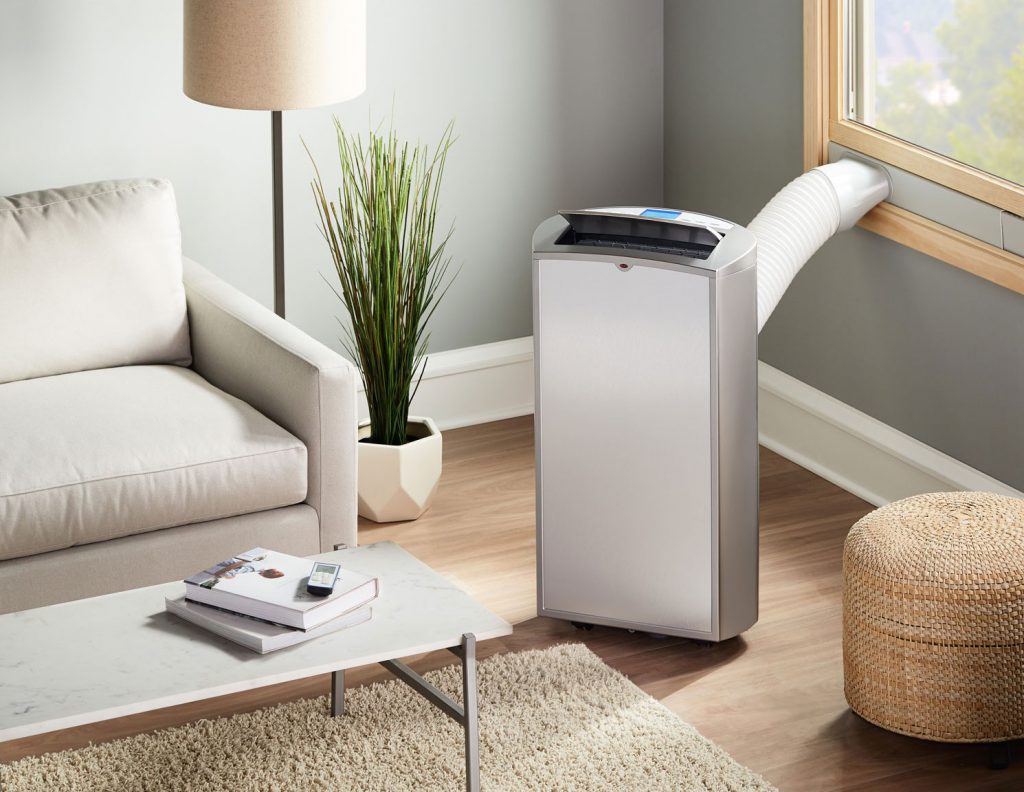
If you’re just buying it for a dorm room, studio apartment, or bedroom, you won’t need a high-powered machine, but if you want it to cool down a larger space, you’ll need to invest in something stronger, with a larger coverage area.
You’ll also need to think about the various features and functionality of your chosen air conditioner, deciding whether or not you need heating or dehumidifying features and modes. The size, weight, portability, and warranty of your conditioner also need to be considered.
When shopping for a portable air conditioner, you may see the acronym ‘BTU’ appearing quite often. Many shoppers are confused by this term, and many manufacturers don’t really make clear what it means. BTU stands for British Thermal Unit, which is a unit used to measure heat energy. In scientific terms a single BTU is the amount of heat needed to raise the temperature of a pound of water by a single degree.
In simple terms, when it comes to portable air conditioners, more BTUs essentially means that the machine has a faster and stronger cooling capacity. So, you may instantly assume that models with high BTU ratings are always going to be better. This isn’t always true, however. More BTUs does mean that the air conditioner is more powerful, just like the Whynter ARC-14S, but you won’t necessarily need all of that power if you only want to cool a small space.
In fact, if you buy an overpowered machine for a small space, you may end up paying over the odds for the model and paying more on energy usage too. However, if you buy a machine with insufficient BTUs, it won’t be able to cool down your space and will run non-stop, costing lots in energy usage and providing an unsatisfying experience for the user. This is why it’s important to do your research and find the right machine for your space.
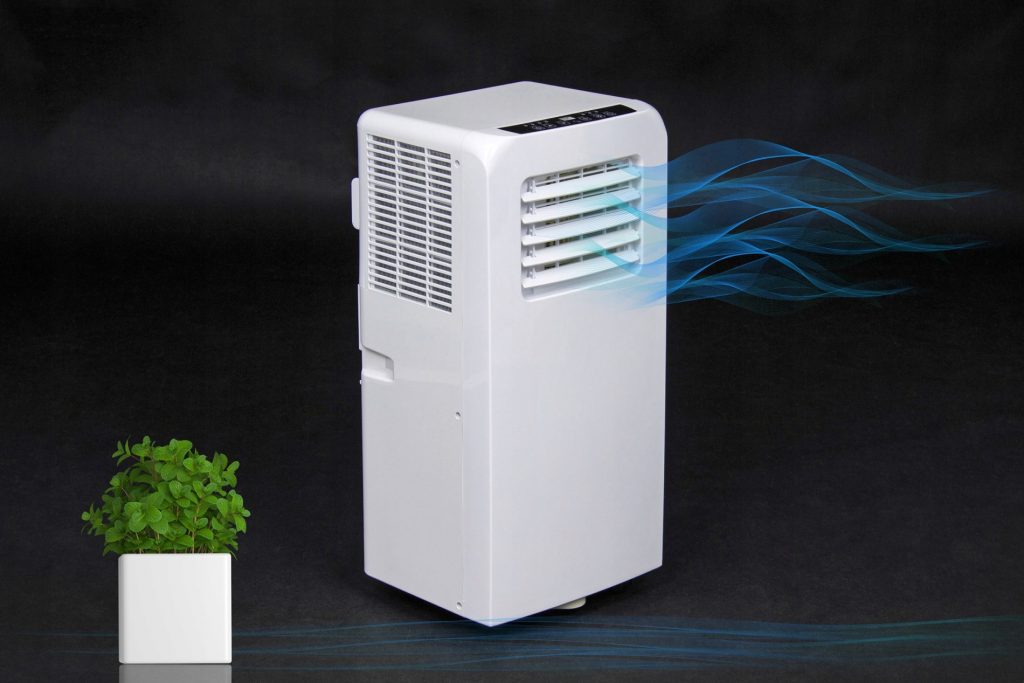 Coverage area
Coverage areaThis is perhaps the number one factor that people think about when searching for a portable air conditioner, and it’s vital to consider the coverage area of your machine before buying it and ensure that it’s strong enough to handle the space you want to cool. In simple terms, coverage area tells us how much space the air conditioner is able to cool down.
The Rollibot Rollicool COOL310-19, for example, can cool down rooms or space of up to 600 square feet, making it one of the strongest portable air conditioners around. Other units are only suitable for smaller spaces of around 200-300 square feet, and these units, like the Shinco 8,000 BTU Portable Air Conditioner, are better suited for dorms, studios, or smaller homes.
Before you even start shopping for a portable air conditioner, think about where you’re going to be using it. If you want to use it in a relatively small space, you can go ahead and buy a more affordable and lower-powered machine with a smaller coverage area, but if you want to cool down a big open-plan living area or multiple rooms, you’ll need a stronger model.
Every portable air conditioner will come with its own array of fan or cool speeds and settings. Some machines only have a couple of different settings, while some will come with a lot of options. The SereneLife 8,000 BTU Portable Air Conditioner, for example, comes with three different cooling modes in total.
The more speed options or modes your air conditioner has, the more flexible it will be. The machine will usually be able to automatically adjust its settings to suit the conditions, using a lower speed when the temperatures aren’t too high and speeding up in warmer conditions in order to provide the most efficient cooling and use the lowest amount of energy.
The length of both the hose and the power cord are very vital features to think about with your portable air conditioner. You definitely don’t want to get home and discover that the cord isn’t long enough to fit in your power outlet or that the hose won’t quite reach out of the window you’d hoped to use for venting the machine.
All portable air conditioners need to be plugged in and properly vented in order to work properly. Longer power cords, therefore, make the air conditioners more versatile, letting you move them around in different spaces and place them at different angles to get the best effects out of them without needing to worry. The Honeywell MO08CESWK has a particularly long cord length of 72 inches.
When we think about portable air conditioners, we tend to associate them with the idea of cooling down a room or home, and this is their primary function. However, it is possible to find portable air conditioners with heating functions too. These functions allow the devices to act in the opposite way to usual, heating rooms rather than cooling them down.
The Rollibot Rollicool COOL310-19 is one example of a portable air conditioner with a heating function. Turning on the heating mode effectively turns the device into a portable heater, warming up rooms and getting your living spaces nice and toasty on cold nights or during the winter months.
This adds flexibility to your air conditioner and gives you another option for heating your home, but it may not be necessary if you already own portable heaters or have efficient heating on your property.
Part of the way in which portable air conditioners typically function is by removing moisture from the air and taking heat energy with it. This means that many portable air conditioners also function as dehumidifiers and even come with dehumidifying modes. The EdgeStar AP8000W, for example, has a dehumidifier mode.
This mode allows the machine to take humidity and moisture out of the air, ideal for those who struggle in humid conditions. It can be very effective for those who live in humid areas or even people who struggle with respiratory issues and want to breathe a little easier in their own homes, so this is a useful feature to have on your portable air conditioner.
Many people who choose a portable air conditioner over a mounted model do so because they enjoy the ‘portable’ aspect of these devices. The whole point of a portable a/c unit is that it can be moved around into different rooms and spaces, so you’ll need to think about its size and weight if you plan on maneuvering it a lot.
Portable air conditioners can come in various weights and sizes. The SereneLife 8,000 BTU Portable Air Conditioner is one of the most compact models on our list, able to fit snugly in the corners of rooms without getting in the way and also being easy to move around from place to place. Remember, however, that smaller units will usually be less effective overall.
If you’re investing in a portable air conditioner, it helps to have a strong warranty to protect your purchase in case anything ever goes wrong. We’ve listed some of the best and most durable models of air conditioners, but you never know when a simple technical or mechanical fault can strike and have a negative impact on the functionality of your device.
Some manufacturers are much more generous than others in terms of warranties. The Black + Decker BPACT10WT is one of the best models for this, with a five-year limited warranty on the compressor and a standard one-year warranty on the rest of the unit. Having a long warranty helps to give you total peace of mind and protection for your purchase.
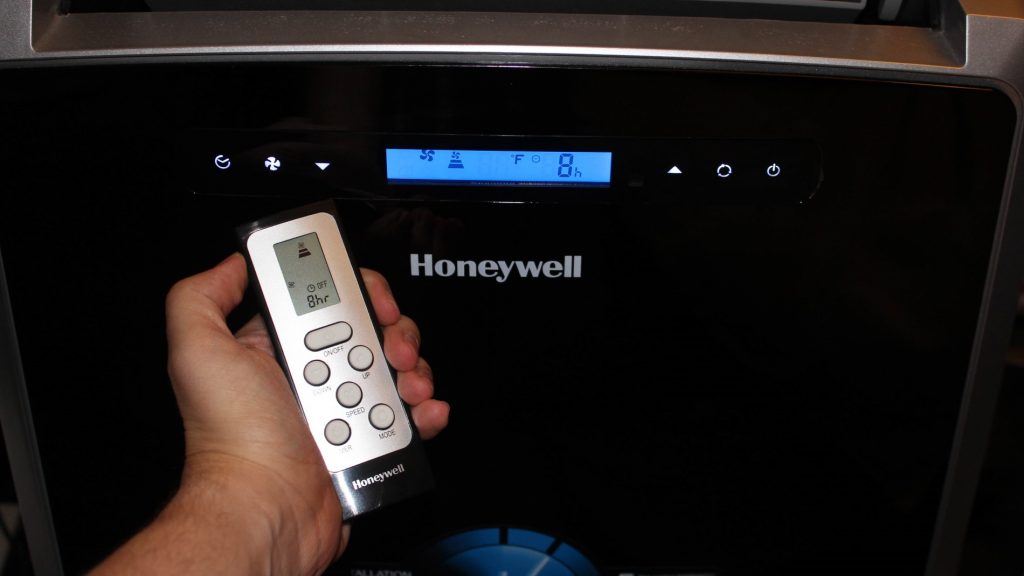
Some portable air conditioners come with remote controls for easy usage, freeing the user from having to actually walk over to the unit to adjust the settings. Some of them come with silent or low-noise modes in order to not distract the user as they work, and some of the best models, like the Rollibot Rollicool COOL310-19, can even come with Wi-Fi functionality and the ability to sync with home assistants like Alexa.
Installing your portable air conditioner is a lot easier than you might think. While fixed and mounted air conditioners require quite a lot of complicated assembly and installation, portable units are very simple. All you need to do to get started is unpack the unit and its accessories. It’s important to note that all units are different, so you’ll need to read the relevant instructions for your chosen model during the installation. However, in general, the first step is to attach the hose or hoses to the back of the unit and feed them out of a window. After that, you can simply plug in the unit with the power cord provided, switch it on, and set it on the right mode for your needs.
Overall, our top-rated portable air conditioner is the Black + Decker BPACT10WT. With a super long power cord and powerful cooling technology, this is the dream machine for smaller rooms and spaces like garages and dorms. Its noiseless mode is a great feature too for those moments you want to cool down without a lot of sounds.
Next, we come to the Whynter ARC-14S. Unlike standard single-hose models, the Whynter ARC-14S has two separate hoses. This results in much faster cooling and more efficient functionality, so if you want a powerful and efficient air conditioner that can handle spaces of up to 500 square feet, this is a great one to choose.
Our third best pick is the SereneLife 8,000 BTU Portable Air Conditioner. This air conditioner is small but mighty, able to cope with spaces of up to 225 square feet.
